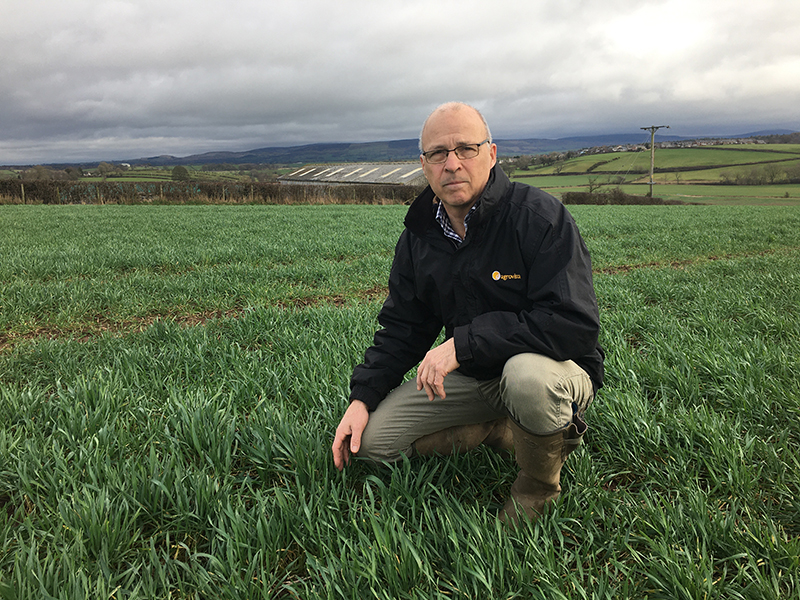Content originally published in the Farmers Guardian
A very useful 130mm of rain fell between the last week of May, when the long dry spell ended, and the time of writing (20th June), almost doubling the amount we had received since the beginning of the year.
This much-needed moisture, coupled with warm temperatures, has given well-established crops a real boost. Generally speaking, we remain well ahead this season, particularly compared with last year.
Everyone took first-cut silage unusually early due to the dry weather, but silage aftermaths greened up quickly and have grown away very well.
By the time this article goes to print a lot of second-cut silage will have been taken. There is plenty of grass, helped no doubt by unused nitrogen, which will help make up for the poorer first cut.
Some maize sown under film is well above waist height. Early sown spring barley drilled into moisture looks well, as does fodder beet, which is now meeting across the rows.
However, early sown light-land spring barley crops that were drought stressed have put up lot of secondary tillers, which are already starting to produce ears. That said, those ears are not far behind the rest of the crop and, whilst they may be small, they may be viable.
Some later-sown light-land barley that went into dry seedbeds is struggling. Some might have to be whole cropped; it is just too uneven to take to maturity. And emergence has been very patchy in open-sown maize and fodder beet drilled in similar conditions.
Some maize seeds emerged three weeks after those that managed to find moisture. This highlights the importance of preserving moisture prior to planting, which is not something that usually concerns us in the north west.
Weed control in dry fodder beet has been tricky, dealing with some very immature beet plants and mature weeds. Where there has been sporadic crop emergence we have had to adopt a little-and-often herbicide policy. We are still doing this in some crops, with doses geared to the smallest beet plants.
By the time this article is published, a lot of winter barley destined for whole crop will have been cut, and we are now looking at crimping. Most winter barleys look quite encouraging – straw may be short due to dry weather, but ear numbers and size look pretty good.
We seem to have overcome the surprise (for the north west at least) winter wheat yellow rust epidemic with effective fungicide treatments at T2; T3 ear sprays are now completed.
 Simon Nelson advises farmers on a wide range of arable and forage crops across Cumbria and into south-west Scotland.
Simon Nelson advises farmers on a wide range of arable and forage crops across Cumbria and into south-west Scotland.

